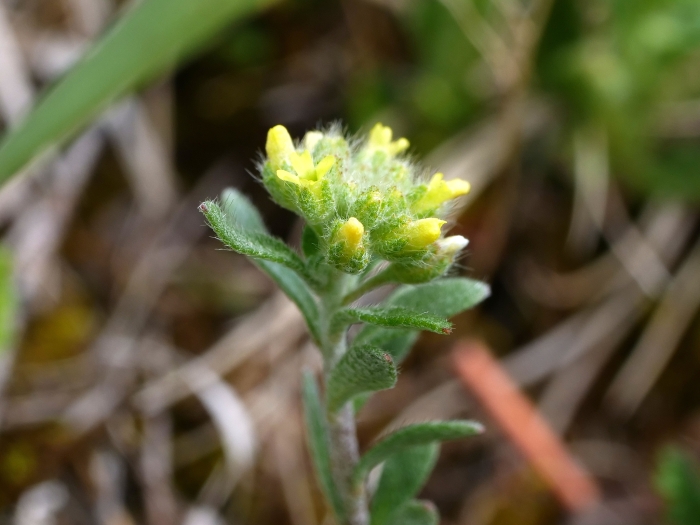Pale Madwort
(Alyssum alyssoides)
Pale Madwort (Alyssum alyssoides)
/
/

Wolfgang Jauch
CC BY 4.0
Image By:
Wolfgang Jauch
Recorded By:
Copyright:
CC BY 4.0
Copyright Notice:
Photo by: Wolfgang Jauch | License Type: CC BY 4.0 | License URL: http://creativecommons.org/licenses/by/4.0/ | Rights Holder: Wolfgang Jauch | Publisher: iNaturalist | Date Created: 2021-05-13T09:33:30-07:00 |

























Estimated Native Range
Summary
Alyssum alyssoides, commonly known as pale madwort or yellow alyssum, is an annual or biennial herb native to gravelly soils, disturbed sites, and open areas in Eurasia. It has become naturalized in many parts of the temperate world, including North America, where it is often found in arable fields, along sandy tracks, and in waste places. This plant typically grows upright or prostrate, reaching up to 16 inches in height. It produces clusters of bright yellow flowers from May to July, which fade to white as they age. The flowers are small but numerous, creating a showy display when in full bloom. The fruits are hairy, branched siliques that can be up to half a centimeter long. Its leaves are simple, narrowly oblanceolate or linear, and covered with fine hairs.
Pale madwort is valued for its ability to thrive in poor soils and its drought tolerance, making it a suitable choice for rock gardens, xeriscaping, and as a ground cover in sunny, well-drained areas. It is also used for erosion control on slopes and banks. In cultivation, it prefers full sun and can tolerate a range of soil types, provided they are well-drained. While it is a self-seeding plant, it is not typically aggressive in garden settings. However, in some regions, it is considered a weed and may require management to prevent unwanted spread.CC BY-SA 4.0
Pale madwort is valued for its ability to thrive in poor soils and its drought tolerance, making it a suitable choice for rock gardens, xeriscaping, and as a ground cover in sunny, well-drained areas. It is also used for erosion control on slopes and banks. In cultivation, it prefers full sun and can tolerate a range of soil types, provided they are well-drained. While it is a self-seeding plant, it is not typically aggressive in garden settings. However, in some regions, it is considered a weed and may require management to prevent unwanted spread.CC BY-SA 4.0
Plant Description
- Plant Type: Herb
- Height: 0.5-1.5 feet
- Width: 0.5-1 feet
- Growth Rate: Rapid
- Flower Color: Yellow
- Flowering Season: Spring, Summer
- Leaf Retention: Semi-deciduous
Growth Requirements
- Sun: Full Sun
- Water: Low
- Drainage: Fast
Common Uses
Border Plant, Drought Tolerant, Groundcover, Low Maintenance, Rock Garden
Natural Habitat
Gravelly soils, disturbed sites, and open areas in Eurasia
Other Names
Common Names: Yellow Alyssum, Small Alyssum
Scientific Names: , Alyssum alyssoides, Aduseton calycinum, Aduseton mutabile, Adyseton alyssoides, Adyseton calycinum, Adyseton campestre, Adyseton mutabile, Alyssum alsinifolium, Alyssum alyssoides f. albineum
GBIF Accepted Name: